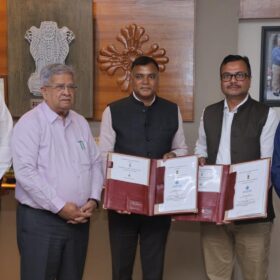The Constitution of India places electricity in the concurrent list (Item 38 in List III of the Seventh Schedule), that is, on which both the central and state governments have jurisdiction. In practice, this has meant that the Centre takes charge of all interstate matters, as well as matters where the ownership rests with the Centre, and the State government is responsible for matters within the state.
The Ministry of Power has notified the amendment to the Electricity (Rights of Consumers) 2020 Rules regarding net metering for rooftop solar installations. The amendment permits net metering to the prosumer for loads up to 500 kW or up to the sanctioned load, whichever is lower. Additionally, this amendment considers net billing or gross metering for rooftop solar systems over 500 kW capacity.
First of all, the amendment states that the arrangement of net metering, net billing, and gross metering shall be as specified by state commissions by their regulations. It is also important to note that this amendment will be applicable only in the states where the regulations do not provide for the net-metering or net billing or net feed-in.
As per my understanding, this amendment is only a guiding rule for state commissions to decide on the subject and doesn’t necessarily cap net metering up to 500 kW.
It is further important to note that net metering earlier was capped at 1 MW until the government proposed to cut it to 10 kW in December 2020 significantly. Several solar developers and stakeholders made representation to Government that this reduction in capacity will destroy the rooftop solar sector.
After severe opposition and representation by the solar industry, the government proposed net metering for capacity up to 500 kW without giving any rationale. Even if it had to be done, it should have been made mandatory for the states to allow net metering up to 500 KW.
The concurrent nature of jurisdiction on electricity allowing states and centre to make rules on the same subject leads to inefficiencies and ambiguities in the system. Since state governments are influenced by the local pressures and requirements, they may end up making rules restricting net metering for lower capacities.
If it had been a purely central subject, there could have been more consistency over the country and possibly a more efficient and rational power business. Since this cannot be changed now, the states must take this amendment as an absolute guiding principle and allow net metering for much higher capacities over and above 500 KW and not make rules restricting the net metering capacities below 500 KW.
The Centre in this amendment should also have recognized the “behind the meter” category of solar installation so that it can be uniformly accepted by all the states. Many states have already recognized behind-the-meter solar installations, such as Maharashtra and Rajasthan.
The views and opinions expressed in this article are the author’s own, and do not necessarily reflect those held by pv magazine.
This content is protected by copyright and may not be reused. If you want to cooperate with us and would like to reuse some of our content, please contact: editors@pv-magazine.com.








By submitting this form you agree to pv magazine using your data for the purposes of publishing your comment.
Your personal data will only be disclosed or otherwise transmitted to third parties for the purposes of spam filtering or if this is necessary for technical maintenance of the website. Any other transfer to third parties will not take place unless this is justified on the basis of applicable data protection regulations or if pv magazine is legally obliged to do so.
You may revoke this consent at any time with effect for the future, in which case your personal data will be deleted immediately. Otherwise, your data will be deleted if pv magazine has processed your request or the purpose of data storage is fulfilled.
Further information on data privacy can be found in our Data Protection Policy.